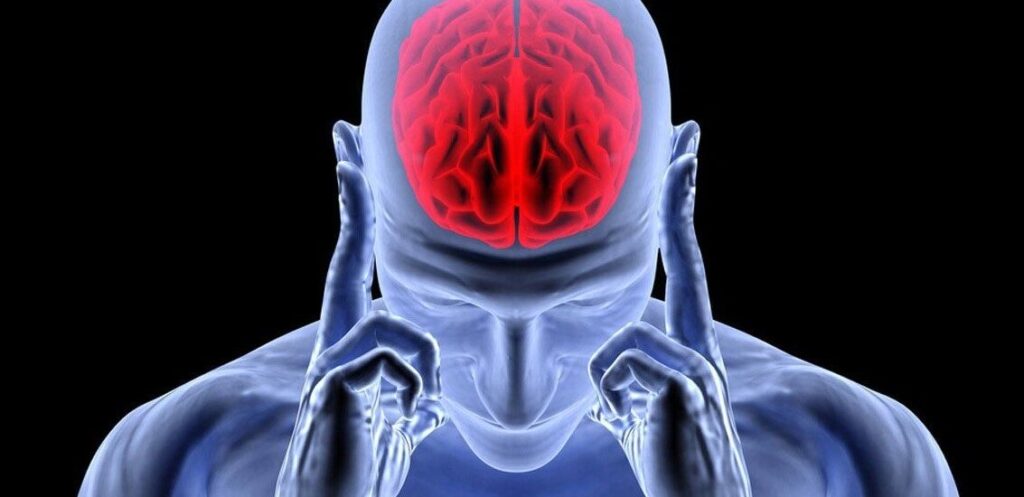Cerebrovascular Accident/Stroke is a condition where there is a problem with blood flow to a part of your brain, which can result in cardiovascular failure. This can occur due to blocked blood vessels or bleeding in the brain. Strokes are a serious emergency; immediate medical attention is crucial to prevent lasting damage or death.

Welcome to HealthcareandSolution.com, your trusted resource for health information and solutions. In this comprehensive guide, we delve into the intricate details of strokes, medically termed as cerebrovascular accidents (CVAs). A stroke occurs when the blood supply to the brain is interrupted or reduced, leading to damage or death of brain cells due to lack of oxygen and nutrients. This guide aims to empower you with knowledge about strokes, their types, causes, risk factors, symptoms, prevention strategies, treatment options, and rehabilitation approaches. By understanding these aspects, you can take proactive measures to protect yourself and your loved ones from the devastating effects of strokes.
Types of Cerebrovascular Accident/Stroke :
- Ischemic
- Hemorrhagic
- Transient Ischemic Attacks (TIAs)
Strokes can be broadly classified into three main types: 1. Ischemic strokes 2. Hemorrhagic strokes, and 3. Transient ischemic attacks (TIAs), each with distinct characteristics and underlying causes.
Ischemic strokes:-
Ischemic strokes occur when a clot blocks blood flow to the brain, accounting for approximately 87% of all stroke cases. These clots can form within blood vessels in the brain (thrombotic strokes) or travel from elsewhere in the body to the brain (embolic strokes).
Hemorrhagic strokes:-
Hemorrhagic strokes, on the other hand, occur when a weakened blood vessel ruptures and bleeds into the surrounding brain tissue. This bleeding can result from conditions such as hypertension, aneurysms, or arteriovenous malformations (AVMs).
Transient ischemic attacks (TIAs):-
Transient ischemic attacks (TIAs), often referred to as “mini-strokes,” are temporary episodes of neurological dysfunction caused by a temporary disruption in blood flow to the brain. While TIAs typically resolve within minutes to hours, they serve as warning signs of potential impending strokes and should not be ignored.
Signs and Symptoms:-
Recognizing the signs and symptoms of a stroke is crucial for timely intervention and improved outcomes. The acronym FAST (Face, Arms, Speech, Time) serves as a useful mnemonic to remember the common signs of stroke:
- Facial weakness: Angle of mouth drooping or numb.
- Arm weakness: half-sided weakness or numbness.
- Speech difficulty: slurred speech or hard to understand.
- Time to call emergency services: If you observe any of these signs, it’s crucial to call for emergency medical assistance immediately.
In addition to these hallmark signs, other symptoms of stroke may include sudden confusion, trouble seeing in one or both eyes, sudden severe headache, dizziness, or loss of balance and coordination.
Risk Factors and Prevention:-
Numerous risk factors contribute to the likelihood of experiencing a stroke, many of which are modifiable through lifestyle changes and medical management.
- Hypertension (High Blood Pressure): High blood pressure is the single most important modifiable risk factor for stroke. By maintaining blood pressure within a healthy range (typically below 120/80 mmHg), the risk of stroke can be significantly reduced. Lifestyle modifications such as adopting a low-sodium diet, regular exercise, stress management, and adherence to prescribed medications can help control hypertension.
- Smoking: Cigarette smoking significantly increases the risk of stroke due to the harmful effects of tobacco smoke on blood vessels and circulation. Quitting smoking is one of the most impactful steps individuals can take to reduce their stroke risk. Support resources such as counseling, nicotine replacement therapy, and medication can aid in smoking cessation efforts.
- Diabetes: Uncontrolled diabetes can damage blood vessels throughout the body, including those supplying the brain, thereby increasing the risk of stroke. Proper management of blood sugar levels through diet, exercise, medication, and regular monitoring is essential for reducing this risk.
- High Cholesterol: Elevated levels of cholesterol, particularly low-density lipoprotein (LDL) cholesterol, contribute to the buildup of fatty deposits (plaques) in blood vessels, increasing the risk of stroke and other cardiovascular diseases. Lifestyle modifications such as adopting a heart-healthy diet low in saturated and trans fats, regular exercise, and medication prescribed by a healthcare professional can help lower cholesterol levels.
- Obesity and Physical Inactivity: Obesity and physical inactivity are associated with various cardiovascular risk factors, including hypertension, diabetes, and high cholesterol, all of which increase the risk of stroke. Maintaining a healthy weight through a balanced diet and regular physical activity can significantly reduce the risk of stroke and improve overall cardiovascular health.
- Excessive Alcohol Consumption: Heavy alcohol consumption can raise blood pressure, triglyceride levels, and the risk of atrial fibrillation, all of which are associated with an increased risk of stroke. Moderation or avoidance of alcohol, as recommended by healthcare professionals, is essential for stroke prevention.
- Atrial Fibrillation (AFib): AFib is an irregular heart rhythm that can cause blood clots to form in the heart, increasing the risk of stroke. Individuals with AFib may require anticoagulant medications to prevent clot formation and reduce the risk of stroke.
- Diet and Nutrition: A diet rich in fruits, vegetables, whole grains, lean proteins, and healthy fats can support cardiovascular health and reduce the risk of stroke. Additionally, reducing sodium intake and limiting the consumption of processed and high-fat foods can help manage blood pressure and cholesterol levels.
- Stress Management: Chronic stress can contribute to the development and exacerbation of cardiovascular risk factors such as hypertension and unhealthy coping behaviors such as smoking or overeating. Stress management techniques such as mindfulness meditation, deep breathing exercises, yoga, and regular physical activity can help mitigate the effects of stress on the body and promote overall well-being.
- Regular Health Check-ups: Regular medical check-ups allow healthcare professionals to monitor and manage risk factors for stroke, such as blood pressure, cholesterol levels, and blood sugar levels. Routine screenings, including blood tests and imaging studies, can help detect underlying conditions that may increase the risk of stroke.
By addressing these modifiable risk factors and adopting a proactive approach to health management, individuals can significantly reduce their risk of stroke and improve their overall quality of life.
Prevention Through Lifestyle Modifications
In addition to managing risk factors, adopting a healthy lifestyle plays a crucial role in stroke prevention. The following lifestyle modifications can help reduce the risk of stroke and promote overall cardiovascular health:
- Balanced Diet: Consuming a diet rich in fruits, vegetables, whole grains, lean proteins, and healthy fats can provide essential nutrients while supporting heart health and maintaining a healthy weight. Limiting the intake of processed foods, sugary beverages, and foods high in saturated and trans fats can help reduce the risk of stroke and other cardiovascular diseases.
- Regular Exercise: Engaging in regular physical activity, such as brisk walking, jogging, swimming, cycling, or aerobic exercises, can improve cardiovascular fitness, lower blood pressure, and reduce the risk of stroke.
- Smoking Cessation: Quitting smoking is one of the most significant steps individuals can take to reduce their risk of stroke and improve overall health. Smoking cessation resources, including counseling, nicotine replacement therapy, prescription medications, and support groups, are available to help individuals quit smoking successfully.
- Limiting Alcohol Consumption: Moderation or avoidance of alcohol consumption is recommended to reduce the risk of stroke and other adverse health effects. For individuals who choose to drink alcohol, limiting intake to moderate levels (up to one drink per day for women and up to two drinks per day for men) is advisable.
- Maintaining a Healthy Weight: Achieving and maintaining a healthy weight through a balanced diet and regular physical activity can lower the risk of stroke and other obesity-related health conditions. Aim for a body mass index (BMI) within the healthy range (18.5 to 24.9 kg/m²) and waist circumference below the recommended thresholds for your gender and ethnicity.
- Managing Stress: Chronic stress can contribute to the development and exacerbation of cardiovascular risk factors, including hypertension and unhealthy coping behaviors. Stress management techniques such as mindfulness meditation, deep breathing exercises, yoga, tai chi, and progressive muscle relaxation can help reduce stress levels and promote overall well-being.
- Adequate Sleep: Prioritizing adequate sleep is essential for overall health and well-being, including cardiovascular health. Aim for seven to nine hours of quality sleep per night, and establish a regular sleep schedule to promote optimal sleep hygiene and improve sleep quality.
- Regular Health Screenings: Regular medical check-ups and health screenings allow healthcare professionals to monitor and manage risk factors for stroke, such as blood pressure, cholesterol levels, blood sugar levels, and atrial fibrillation. Routine screenings, including blood tests, electrocardiograms (ECGs), and imaging studies, can help detect underlying conditions and identify individuals at risk of stroke.
By incorporating these lifestyle modifications into your daily routine, you can significantly reduce your risk of stroke and improve your overall cardiovascular health.
Seeking Medical Assistance and Emergency Response:-
In the event of a suspected stroke, immediate medical attention is crucial to minimize brain damage and improve outcomes. If you or someone you know experiences symptoms of a stroke, such as sudden weakness or numbness in the face, arm, or leg, especially on one side of the body; sudden confusion, trouble speaking, or difficulty understanding speech; sudden trouble seeing in one or both eyes; sudden trouble walking, dizziness, loss of balance, or coordination; or sudden severe headache with no known cause, it’s essential to act quickly and call emergency medical services
Upon arrival at the hospital, healthcare professionals will conduct a series of diagnostic tests to determine the type and severity of the stroke and initiate appropriate treatment measures. Time-sensitive interventions, such as thrombolytic therapy or mechanical thrombectomy for ischemic strokes and surgical interventions or endovascular procedures for hemorrhagic strokes, may be recommended to restore blood flow to the brain and minimize further damage.
Following acute treatment, individuals who have experienced a stroke may require ongoing medical care and rehabilitation to maximize recovery and regain lost function.
Rehabilitation services, including:-
physical therapy, occupational therapy, speech therapy, and cognitive rehabilitation, can help individuals regain independence, improve mobility and communication skills, and adapt to any residual impairments or disabilities.
Support and Caregiver Resources:-
Stroke recovery can be a challenging journey, not only for individuals who have experienced a stroke but also for their caregivers and loved ones. Caregivers play a vital role in providing physical, emotional, and practical support to stroke survivors throughout their recovery process.
If you are a caregiver or family member of a stroke survivor, it’s essential to prioritize self-care and seek support when needed. Caregiver support groups, counseling services, respite care options, and educational resources are available to help caregivers navigate the complexities of stroke recovery and caregiving responsibilities.
Additionally, communication and collaboration with healthcare professionals, including physicians, therapists, and social workers, can facilitate coordinated care and access to resources and services tailored to the needs of both the stroke survivor and their caregivers.
Remember that stroke recovery is a gradual process that requires patience, persistence, and perseverance. Celebrate small victories, acknowledge challenges, and lean on your support network for guidance and encouragement along the way.
Conclusion
In conclusion, strokes are serious medical emergencies that require prompt recognition, timely intervention, and comprehensive management to minimize brain damage and optimize outcomes. By understanding the risk factors, signs, and symptoms of stroke, implementing preventive measures, adopting a healthy lifestyle, seeking medical assistance when needed, and providing support to stroke survivors and caregivers, we can collectively work towards reducing the burden of stroke and improving the quality of life for individuals affected by this condition.
At HealthcareandSolution.com, we are committed to providing reliable information, resources, and solutions to empower individuals to take control of their health and well-being. Whether you’re seeking guidance on stroke prevention, treatment options, rehabilitation strategies, or caregiver support, we’re here to support you every step of the way.
Together, let’s take proactive steps to safeguard ourselves and our loved ones from the devastating effects of strokes and promote a healthier, happier future for all. Stay informed, stay proactive, and prioritize your health today for a better tomorrow.
Thank you for choosing HealthcareandSolution.com as your trusted health partner. Your health is our priority.







